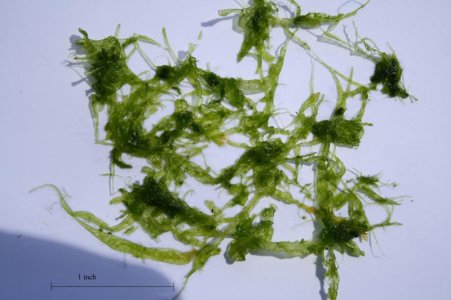At 550, Carbon is the big one. Plants need it more than ANY other nutrient. In nature and in aquariums, it is most often the limiting nutrient for plants. Carbon Dioxide (CO2) is plants' preferred form of Carbon. Many fresh water planted tank keepers dose CO2, to get luxurious plant growth. It is just as helpful for marine plant keepers. A simple way to dose CO2, is to rent a 5 lb CO2 tank, top it with a regulator, and run airline tubing to the intake of a pump or a canister filter or reactor.
Hi Michael; have read up to this point in your very long thread

& saw the above.
As that's as far as I've read of the thread so far, & that goes back in time somewhat, you may have already discovered, & know all about the following information I'll add?
But others might find it interesting.
Cheers
Photosynthesis and the Reef Aquarium: by Randy
http://reefkeeping.com/issues/2006-10/rhf/index.php
some extracts
Freshwater aquarists caring for brightly-lit planted aquaria have long known the importance of CO2, and often add carbon dioxide directly to the aquarium water in one way or another to supply those tanks' substantial need for this material.
Reef aquarists, on the other hand, might have just as much or more photosynthesis taking place, but rarely worry about adding carbon dioxide.
Why?
That's one of the topics to be detailed in subsequent sections of this article. The answer is not that seawater contains more CO2 than does freshwater, but rather that seawater contains other chemicals that can, in some cases, be used to supply carbon dioxide.
When a gas phase carbon dioxide molecule enters water, it is initially hydrated to carbonic acid.
The carbonic acid that is formed when carbon dioxide hydrates can then very quickly equilibrate into the water's carbonate buffer system, converting into both bicarbonate and carbonate by releasing protons (H+):
Consequently, carbonic acid, bicarbonate and carbonate are in equilibrium with each other at any given point in time. The primary factor that determines the relative amount of each species at equilibrium in seawater is the pH, with a small temperature effect as well.
At most pH values attained in a reef aquarium, however, bicarbonate is far more prevalent than carbon dioxide.
Figure 1 shows data calculated for all three species as a function of pH in seawater. From this graph, it is clear that if getting carbon dioxide itself is limiting at pH 8.2, it might be more efficient to get it from bicarbonate because so much more is present.
In fact, roughly 200 times more bicarbonate than carbon dioxide is present in seawater at pH 8.2.
Obtaining Carbon Dioxide from Bicarbonate: Direct Uptake
An alternative way to obtain carbon dioxide via seawater bicarbonate is to take up the bicarbonate
through protein transport mechanisms across the cell membranes, and then once inside the cells
where it is needed, carbonic anhydrase converts it into carbon dioxide and hydroxide ion.
also
Obtaining Carbon Dioxide from Bicarbonate: Carbonic Anhydrase
Obtaining Carbon Dioxide from Bicarbonate: Proton Pumping
.



